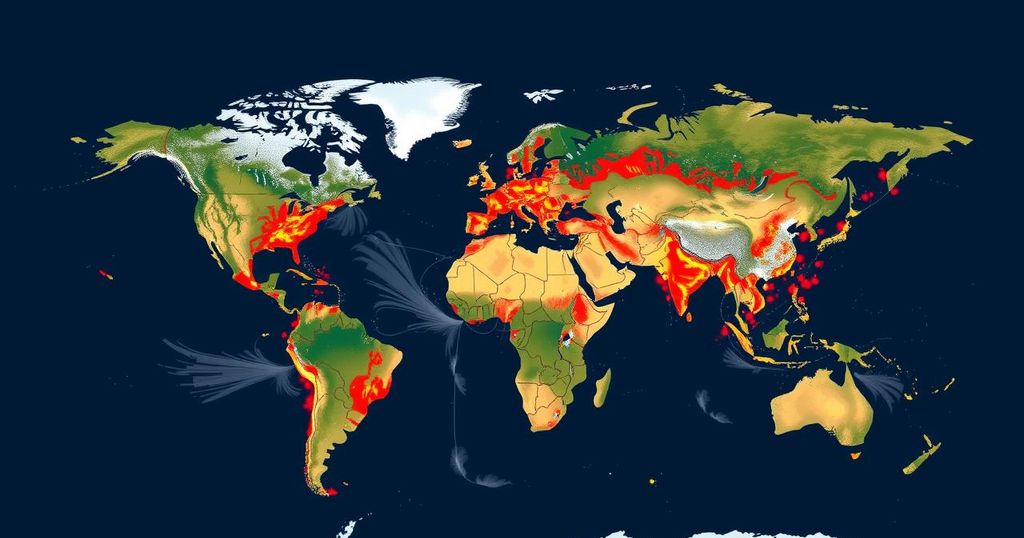Research increasingly shows that human-induced climate change significantly elevates the likelihood and severity of extreme weather events worldwide, with 74% of analyzed occurrences affected. Carbon Brief’s interactive map features findings from over 600 studies examining nearly 750 extreme weather cases. While some events exhibit diminished impacts due to climate change, the overwhelming evidence highlights a troubling trend of intensified extremes, particularly in heat-related phenomena.
In 2004, researchers pioneered a study that quantified human-induced climate change’s impact on individual extreme weather events, notably highlighting the devastating 2003 European heatwave that caused over 70,000 fatalities. This marked the inception of the scientific field known as “extreme event attribution.” Attribution studies assess the extent to which climate change has influenced the severity and frequency of various extreme weather phenomena, which range from wildfires and droughts to typhoons. Carbon Brief has continuously updated an interactive map encompassing over 600 studies, detailing nearly 750 extreme weather events and trends. The findings indicate that climate change has intensified or made 74% of the examined events more likely, with some instances deemed nearly impossible without human influence. Conversely, about 9% of events were seen as less likely or less severe due to climate change, while 10% showed no signs of human impact, and 7% remained inconclusive owing to insufficient data. This latest iteration of the map serves as a comprehensive showcase of attribution studies, revealing how climate change enhances the likelihood of heat extremes, rain and flooding, while also highlighting anomalous instances where changing climate has lessened the impact of certain weather conditions. By categorizing data regionally, the map illustrates the uneven distribution of studies, with a predominant focus on events in Europe, Asia, and Northern America, while underrepresenting central and southern Asia, Oceania, and parts of Africa. The map also reflects the significant advancements in attribution science and methodology, including rapid study initiatives launched by World Weather Attribution, allowing real-time assessments of extreme weather events’ connections to climate change. In conclusion, the research underlines the urgent need for continued exploration into the attribution of extreme weather events, particularly as the impacts of climate change become increasingly complex and widespread across different global regions.
The investigation into the linkage between human-caused climate change and extreme weather events has evolved significantly since the landmark study in 2004, which was the first to ascertain the role of anthropogenic factors in specific weather events. The burgeoning field of extreme event attribution has since allowed researchers to methodologically assess how variations in climate can be attributed to human activity, yielding critical insights into global weather patterns. The growing repository of studies curated by Carbon Brief highlights the imperative nature of understanding these connections in light of increasingly devastating climate-related disasters worldwide.
The evidence from the mapped studies emphasizes that climate change is a substantial driver of extreme weather events, affecting a significant majority of recorded instances. While some events have been observed to diminish in likelihood due to climate change, the predominant impact remains one of intensified weather patterns, notably in heat-related phenomena. This ongoing research further informs the necessity for global action against climate change to mitigate these extreme weather occurrences.
Original Source: www.carbonbrief.org






